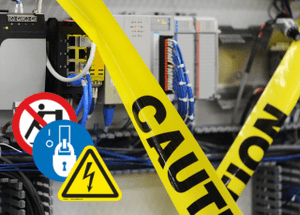Back to School: COVID-19 and Best Practices in Visual Safety

From preschool to college, the health and safety of students is a primary focus of the education system. Ensuring the safety of teachers, maintenance staff and visitors is also a top priority. During ‘normal’ times, there are many potential safety risks to consider, from electrical rooms to parking and traffic, from health and hygiene to wet floors. Now, as many schools and universities are opting for in-person learning, the COVID-19 pandemic brings with it a range of new concerns to consider. Here, we explore those considerations, including best practices for visual safety communication to help keep people safe and healthy in the new academic environment.
Considerations for School Safety
Communities in the U.S. have spent the past months
considering their reopening plans – not an easy task amid fluctuating guidance
and COVID-19 infection rates. The CDC has released helpful considerations for
schools
and childcare programs (including K-12) and colleges,
universities and higher education levels. It’s intended to help school
administrators protect the health and safety of their students and staff by
focusing on four key areas:
- Promoting behavior that reduces COVID-19’s spread
- Maintaining healthy environments
- Maintaining healthy operations
- Preparing for when someone gets sick
This is especially challenging as schools need to determine – in collaboration with state and local health officials – how to implement each of these considerations while adjusting to meet the unique needs and circumstances of the local community, which is subject to change based on COVID-19’s spread.
The CDC’s guidance for secondary and higher education includes the following:
- Developing protocols for monitoring local COVID-19 data in the school’s community
- Adopting mitigation strategies to promote healthy behaviors and planning what to do when students, teachers or staff become sick
- Developing and testing information-sharing systems
- Establishing criteria for when the school will suspend in-person learning to stop or slow the spread of COVID-19, as well as when they’ll resume in-person learning
- Developing strategies for encouraging safe behaviors like staying home when appropriate, hand hygiene and respiratory etiquette, and cloth face coverings. Here, the CDC refers to posting signs in highly visible locations (entrances, restrooms, etc.).
Specific Ways to Encourage
Behaviors That Reduce Virus Spread
To help reduce the spread of COVID-19 infection, the CDC
recommends that schools consider incorporating the following into their
reopening strategy:
- Stay Home or Isolate When Appropriate : Actively encourage students and staff who are sick or who have recently been in contact with a person with COVID-19 to stay home. Consider developing policies that refrain from reprisal if/when sick employees need to stay at home. Offer virtual learning and work-from-home opportunities when possible.
- Reinforce Hand Hygiene and Respiratory Etiquette : Teach students and staff about proper handwashing techniques using soap and water for at least 20 seconds. Inform them that, when soap and water are not readily available, hand sanitizer that contains at least 60% alcohol can be used as a substitute. Reinforce the use of cloth face coverings and masks where age and medically appropriate.
- Provide Adequate Supplies : Providing adequate hygienic supplies like soap and water, sanitizer, paper towels, disinfectant wipes and face coverings helps support healthy hygiene practices.
- Post Safety Signs and Messages : Be sure to post signs and messages in highly visible locations that promote protective measures and explain how to stop the spread of COVID-19 infection.
- Effective Communication : Simple, clear and effective language is best when talking about behaviors that reduce the spread of COVID-19. Tailor communication methods so that they are accessible by all students, faculty and staff, including people with disabilities. Translate materials into languages commonly spoken in the community to help further convey the message.
Regularly encourage these behaviors among students and staff and offer the opportunity for questions when they arise. Being proactive and creating plans to build and continually foster safe and healthy school communities is an integral part to a successful COVID-19 reduction strategy.
Back to School Plans and Visual Safety
Similar to
back
to work plans for facilities and visual safety, schools needs to
proactively assess safety from all angles. While it may not seem like going to
school poses risks for children and adults, any structure has elements that
could create a risk if not clearly labeled. In addition, according to the CDC’s
continuum of risk, risks of spread among students, teachers, and staff are
lowest in virtual-only settings and the highest in in-person settings. From dormitories,
to cafeterias to science labs, posting best practice safety visual to remind
people of hazards and prevention measures is an important aspect in strengthening
your risk reduction strategy.
Visual safety alerts like floor markings and signs help promote behaviors that reduce the spread of COVID-19 and help keep schools in compliance with safety protocols. Having potential risk areas identified can ensure a safe, smooth school day — important now more than ever in this current health pandemic.
Supporting Your Reopening Needs
Whether or not schools have opted for remote learning, in-person
learning or a range of hybrid options in between as they reopen, one of the
only certainties is that these plans are subject to change based on the spread
of COVID-19. As schools are likely contending with
decisions around how to keep their students, faculty, maintenance staff and
visitors safe, Clarion Safety is here to help. We’ve worked with schools,
colleges and research facilities all over to help provide them with the safest
possible space. From our full catalog of markings for the
education industry to those
specifically related to COVID-19, we have the products to support your specific
reopening needs.
Get in
touch with us and let us know how our solutions can help
during this transition.



